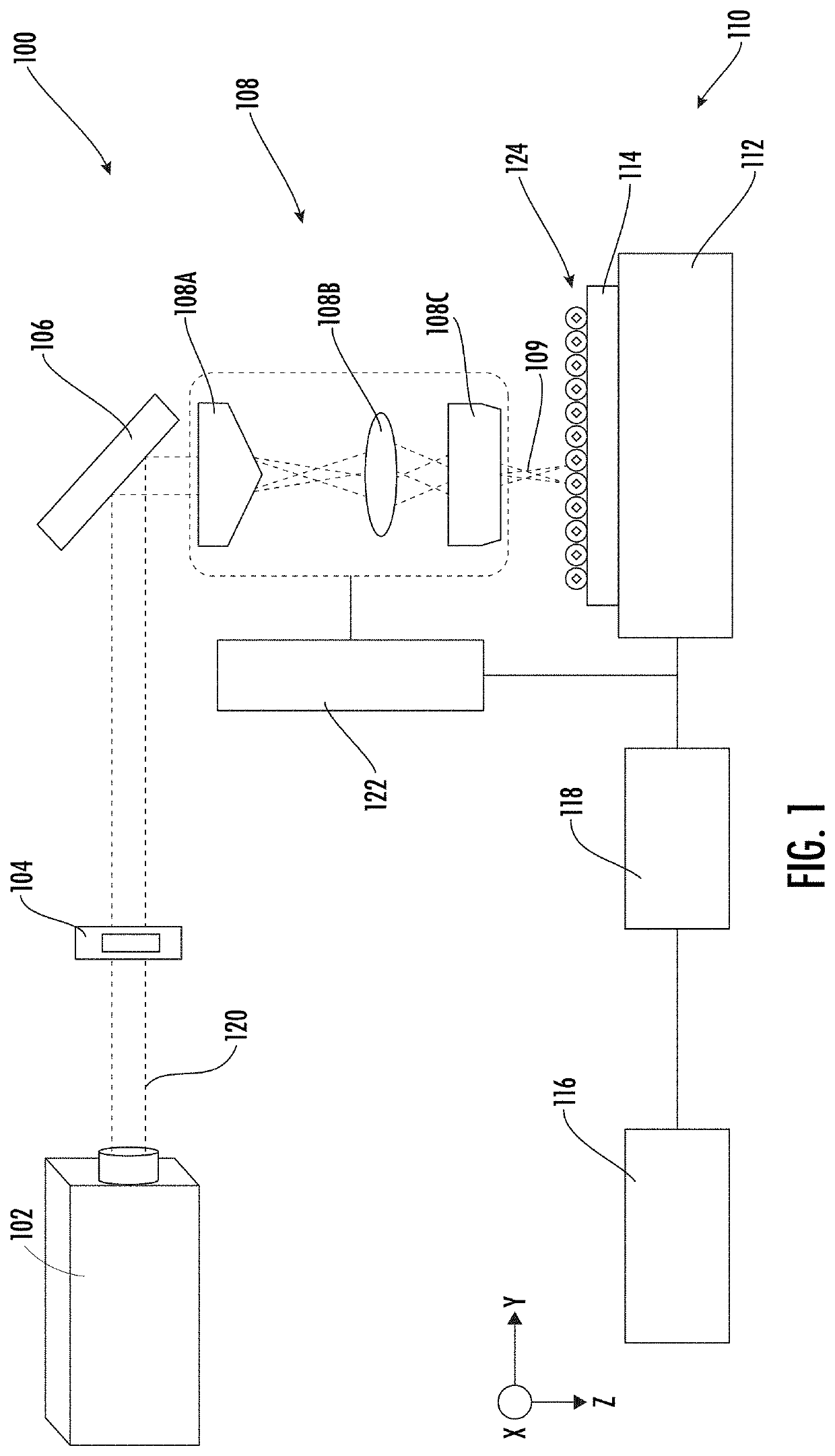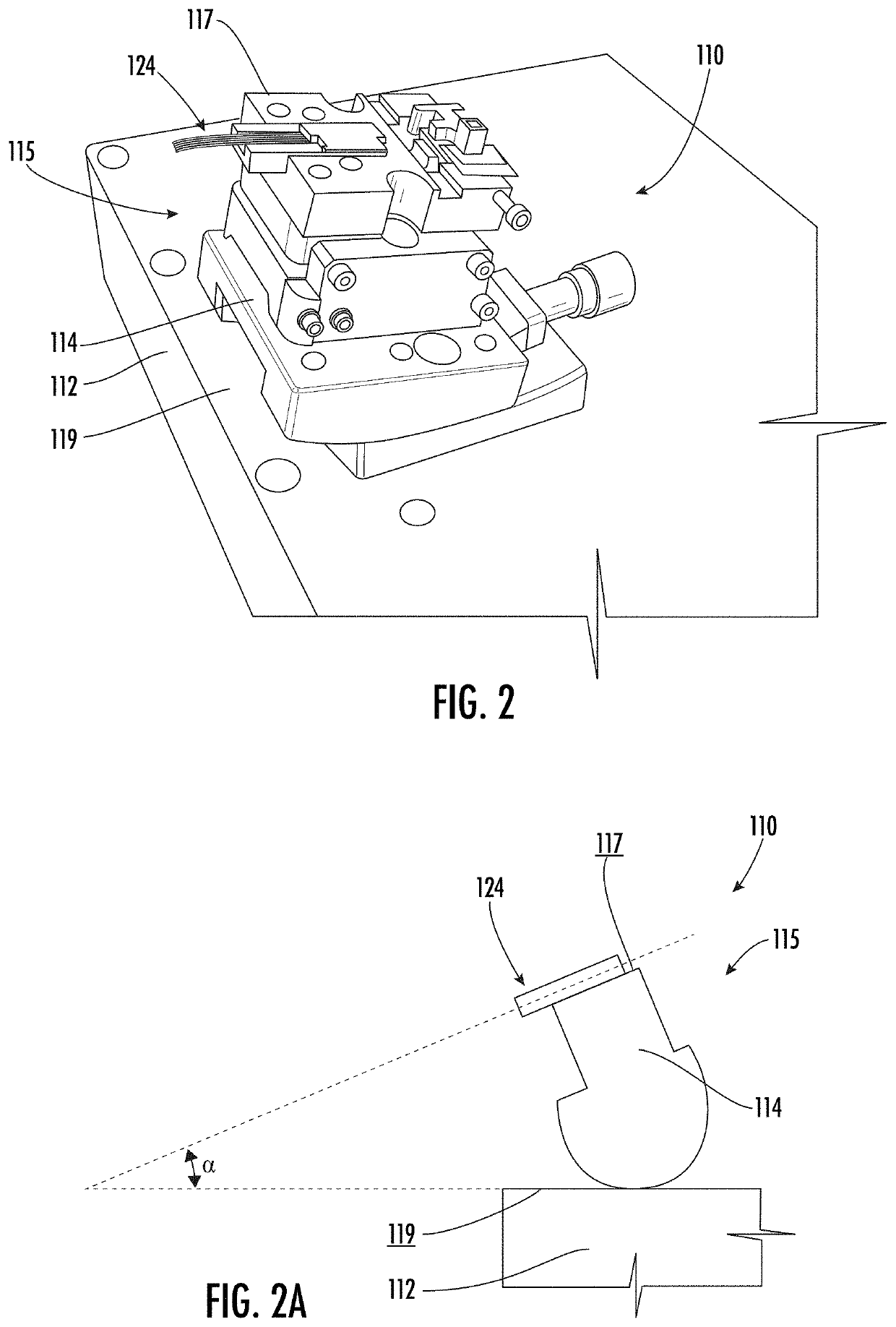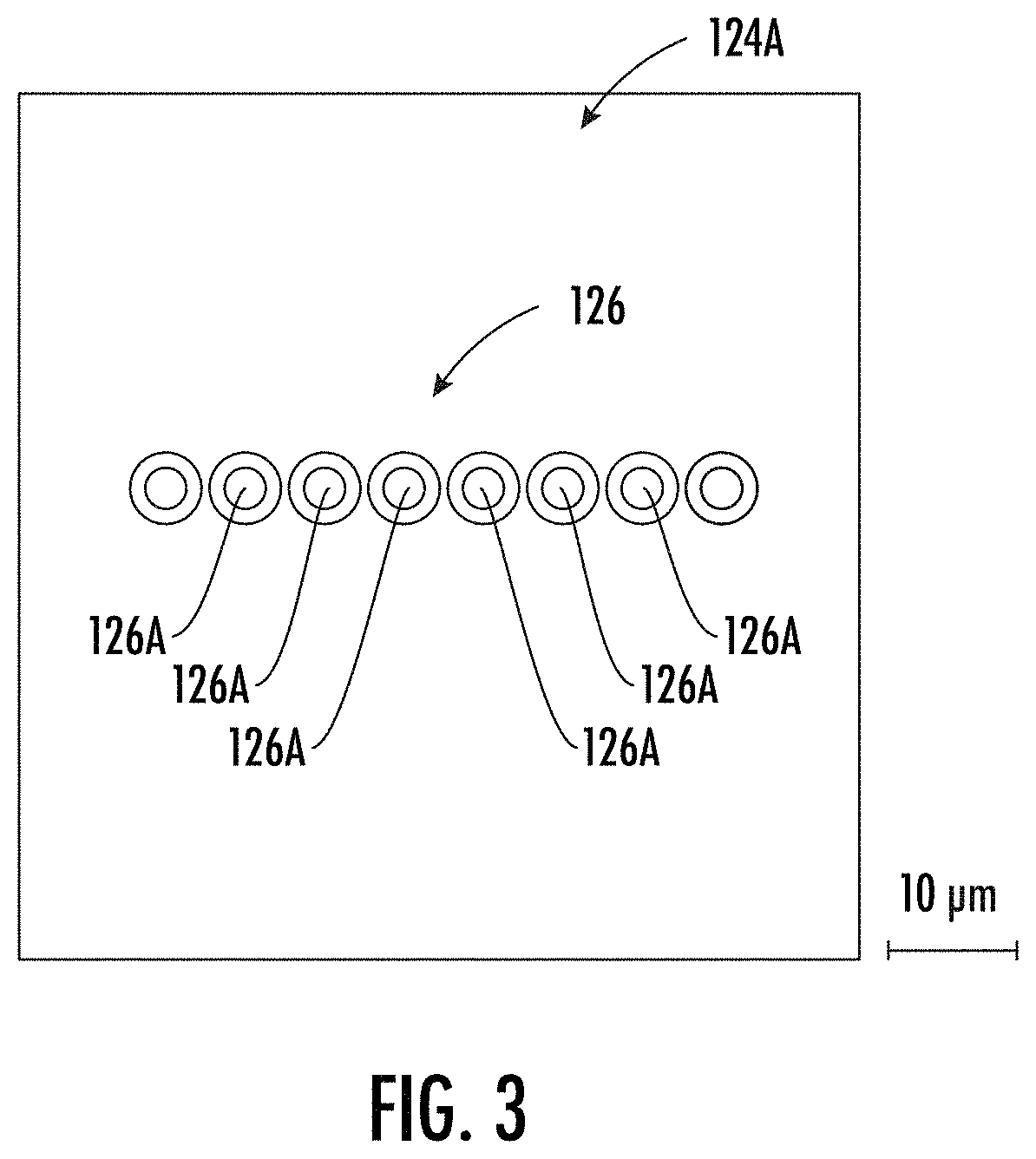Laser-cleaving of an optical fiber array with controlled cleaving angle
- Summary
- Abstract
- Description
- Claims
- Application Information
AI Technical Summary
Benefits of technology
Problems solved by technology
Method used
Image
Examples
example 1
Relating to Optical Fiber Array 124 Having a 0° Cleave Angle (Flat Optical Fiber End-Face 127
[0064]FIGS. 3 and 6A-9B illustrate representative simulations and images for optical fiber arrays comprising single mode optical fibers that have been cleaved with a flat optical fiber end-face (i.e., 0° cleave angle). In particular, the optical fiber array underwent laser-cleaving with mechanical separation by a pressurized air jet as disclosed herein. While this Example relates to an optical fiber array containing single mode optical fibers, it is within the scope of the present disclosure that alternate types of optical fiber arrays may be used (e.g., optical fiber arrays containing multimode optical fibers) to yield the properties discussed herein.
[0065]Referring now to FIGS. 7A-7C, results of a plane-wave decomposition model simulation of Bessel beams entering an optical fiber of an optical fiber array at a perpendicular angle relative to a longitudinal axis of the optical fiber with a ...
example 2
Relating to Optical Fiber Array 124 Having a 8° Cleave Angle (Angled Optical Fiber End-Face 127)
[0070]FIGS. 10A-12 illustrate microscopic images for optical fiber arrays comprising single mode optical fibers that have been cleaved at an angle of about 8° by tilting the upper stage of the stage of the laser apparatus as discussed above. In particular, the optical fiber array underwent laser-cleaving with mechanical separation by a pressurized air jet as disclosed herein. While this Example relates to an optical fiber array containing single mode optical fibers, it is within the scope of the present disclosure that alternate types of optical fiber arrays may be used (e.g., optical fiber arrays containing multimode optical fibers) to yield the properties discussed herein.
[0071]Referring first to FIGS. 10A and 10B, a sample optical fiber array (from a ribbon cable containing 12 optical fibers) was examined under a microscope after laser-cleaving as described above and prior to mechanica...
example 3
Relating to Water Assisted Laser Angle Cleaving of Optical Fiber Array
[0074]Water assisted laser-cleaving is also suitable for making an angled cleave of an optical fiber array. Without wishing to be held to any particular theory, it is believed that by immersing the optical fiber array in liquid during laser perforation processing both sources of aberration due to index matching between the fiber and water are reduced. FIG. 13A shows a simulation of the intensity profile (seen in XZ plane) of a Bessel beam directed to the center of a tilted optical fiber end-face when assuming the optical fiber is placed in air. FIG. 13C shows the intensity profile (seen in XZ plane) of a Bessel beam launched to the center of the tilted optical fiber end-face while the optical fiber is immersed in water. When comparing FIGS. 13A and 13C, there are reduced aberrations / distortions of the laser path / direction as the laser beam passes through the optical fiber in water as compared to air.
[0075]Addition...
PUM
 Login to View More
Login to View More Abstract
Description
Claims
Application Information
 Login to View More
Login to View More - R&D
- Intellectual Property
- Life Sciences
- Materials
- Tech Scout
- Unparalleled Data Quality
- Higher Quality Content
- 60% Fewer Hallucinations
Browse by: Latest US Patents, China's latest patents, Technical Efficacy Thesaurus, Application Domain, Technology Topic, Popular Technical Reports.
© 2025 PatSnap. All rights reserved.Legal|Privacy policy|Modern Slavery Act Transparency Statement|Sitemap|About US| Contact US: help@patsnap.com



